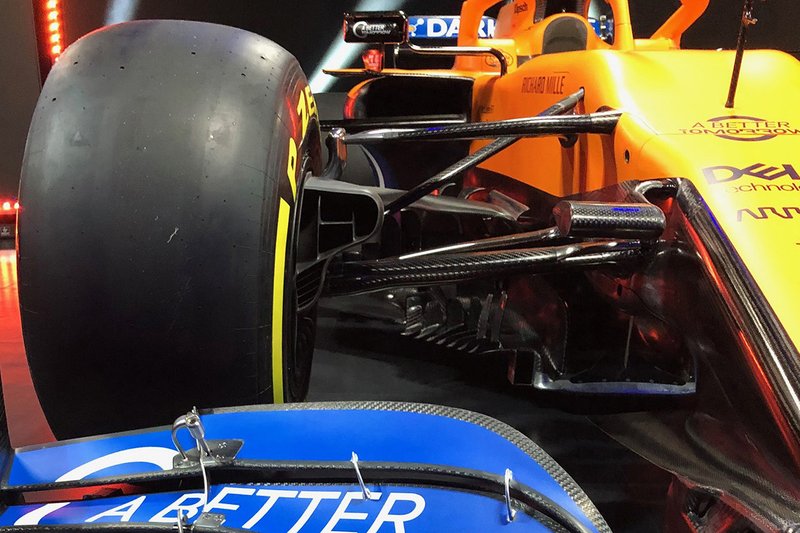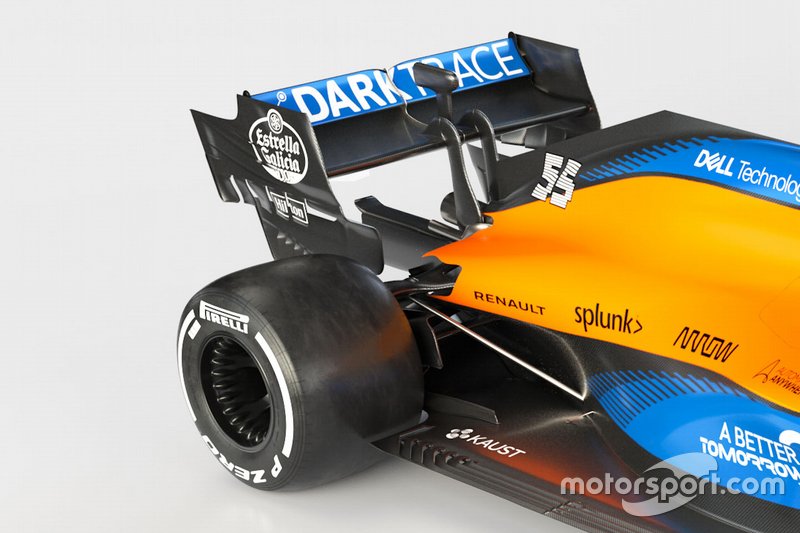
Giorgio Piola's F1 technical analysis
Tech analysis: Does new McLaren boast the key ingredients?

McLaren became the third team to physically lift the covers off its 2020 challenger, revealing the MCL35 during a presentation at the McLaren Technology Centre in Woking. The car is the first to be designed under James Key’s stewardship and represents a fair departure from its predecessor.
Several areas of the car have been completely revamped over the MCL34 from 2019, as the team looks to make gains on those ahead and leave the rest firmly in its mirrors.
Click on the arrows to scroll through the images…
McLaren MCL35

Photo by: McLaren
The front-end of the MCL35 whets the appetite, as the team has placed significant focus on its nose and front suspension design in order that it complements the entire concept.
McLaren MCL33 nose

Photo by: Giorgio Piola
The nose is a reimagining of this rather complex structure first introduced by McLaren back in 2018. The very slender main structure of the nosecone is still at the core of this, as is the use of the under-structure cape. The nose tip and the two secondary inlets have been cast aside in favour of a more simple approach, while the wing pillars remain at a point as far from the centre as they’re permitted.
McLaren MCL35 front wing

Photo by: McLaren
The pillars, which are extremely long when compared with designs from teams who also use a cape, feature three slots in them to guide the airflow from the outer face. This is a solution we’ve seen from McLaren in its not too distant past, albeit in another guise.
McLaren MCL35 detail

Photo by: McLaren
The redesign of the nose can be considered just an amuse-bouche when compared with the overhaul that the suspension has undergone, as the team looks to improve flow from the front of the car right through to the rear.
McLaren MCL35 front suspension

Photo by: Giorgio Piola
Having tested a similar solution as far back as the Belgian GP last year, it’s of no surprise that the team has outboard upright extensions to raise the upper wishbone, a decision that’s been mirrored by a high inboard anchorage too.
McLaren MCL35

Photo by: McLaren
It’s a feat that’s matched by the decision to significantly raise the upper wishbone too, placing it at a similar height to the boomerang winglet atop the bargeboards, while the upper wishbone is similarly adjacent to the wing profile that covers the side impact spar.
McLaren MCL35 front suspension detail

Photo by: Giorgio Piola
This careful management and positioning of each component relative to the other shows a significant desire to manage the airflows path toward the entirely re-sculpted sidepods, which are now much more tightly packaged and higher waisted, with a much smaller cooling inlet now housed up out of the way of any flow turbulence that could reduce its efficiency.
McLaren MCL35 detail

Photo by: McLaren
Behind the driver another striking design is can be found, as the team has opted to create a bulb-shaped airbox, crash structure and engine cover. The airbox is made up of a large facade that’s wrapped around an inverted V-shaped crash structure within, whilst other flow diverting baffles inside the structure are used to divert flow to the various power unit radiators and coolers.
McLaren MCL35 detail

Photo by: James Allen
The interesting shape of this structure doesn’t stop there though, as the structure leans forward casting a shadow over the driver and perhaps being used to better capture air received off the halo into the inlet.
McLaren MCL35 rear detail

Photo by: McLaren
The engine cover and sidepod bodywork may seem a little bulky when compared with the Ferrari and Red Bull already presented, but McLaren has kept it tight wherever possible and also minimised and raised the rear cooling outlet, in order to try and make up for any aerodynamic deficiencies packaging the Renault power unit and their ancillaries may have caused.
Read Also:
Related video

Previous article
Exploring an F1 icon: Giorgio Piola on the McLaren MP4/4
Next article
Track changes could happen by 2021 Australian GP

About this article
| Series | Formula 1 |
| Event | McLaren launch |
| Teams | McLaren Shop Now |
| Author | Giorgio Piola |
Tech analysis: Does new McLaren boast the key ingredients?
Race hub
| Session | Date | Local time Your time | Content |
| FP1 | Thu 12 Mar Fri 13 Mar | 21:00 12:00 | |
| FP2 | Fri 13 Mar Fri 13 Mar | 01:00 16:00 | |
| FP3 | Fri 13 Mar Sat 14 Mar | 23:00 14:00 | |
| QU | Sat 14 Mar Sat 14 Mar | 02:00 17:00 | |
| Race | Sun 15 Mar Sun 15 Mar | 01:10 16:10 | |































